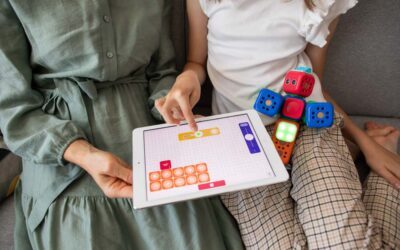ABA therapy is an evidence-based intervention that focuses on increasing desired behaviors and reducing problem behaviors. ABA therapy has been shown to be effective in treating autism and improving communication skills.
There are a variety of communication therapies that can be used to help children with autism develop communication skills. The most common type of communication therapy is speech therapy. Speech therapy focuses on improving an individual’s ability to produce and understand speech.
Other types of communication therapies include:
- Augmentative and alternative communication (AAC): AAC refers to any method of communication that is used to supplement or replace traditional speech. AAC can be as simple as using gestures or sign language, or it can be more complex, such as using electronic devices that generate speech.
- Social skills training: Social skills training is designed to help individuals with autism improve their social skills. Social skills training may include role-playing activities, modeling, and practice in real-life situations.
- Behavior management: Behavior management is a type of behavior therapy that focuses on changing problem behaviors. Behavior management may include setting up a system of positive reinforcement, such as a token economy system.
Communication therapies are often used in combination with each other and with other types of therapies, such as occupational therapy and behavior therapy.
Assessing Communication Skills in an ABA Program
It is essential to assess an individual’s communication skills before starting an ABA program. The type and intensity of communication interventions should be based on the individual’s needs and skills. There are a variety of ways to assess an individual’s communication skills.
One way to assess an individual’s communication skills is through observation. This can be done in naturalistic settings or in structured situations. When observing, it is important to note the individual’s spontaneous communication, as well as any prompted communication. It is also important to note any attempts to communicate, even if they are unsuccessful. Another way to assess communication skills is through the use of standardized assessments. These assessments can provide information about an individual’s expressive and receptive communication skills.
Another way to assess an individual’s communication skills is through the use of functional communication assessments (FCAs). FCAs are used to determine why an individual is communicating and to identify reinforcers that may be motivating the behavior. FCAs can also be used to assess the individual’s current level of communication skills and to plan for future goals.
It is important to keep in mind that assessment is an ongoing process. As the individual’s communication skills change, the assessment should be updated to reflect these changes. Assessment should be an ongoing part of the ABA program to ensure that the individual’s needs are being met and that the interventions are appropriate.

Using Positive and Negative Reinforcement to Teach Communication Skills
When it comes to teaching communication skills, positive and negative reinforcement can be very effective tools. By using positive reinforcement, you can reward your child for using the communication skills you are trying to teach them. This can help to encourage them to keep using those skills. On the other hand, negative reinforcement can be used to help discourage your child from using certain communication skills. For example, if your child is screaming to get your attention, you may give them attention when they use their indoor voice. Ultimately, using a mix of both positive and negative reinforcement can be a great way to teach your child communication skills.
One of the most important things to keep in mind when using positive and negative reinforcement is to be consistent. If you only reinforce your child sometimes, they may get mixed signals and become confused about what is and is not acceptable. It is important to always be clear and consistent with your expectations.
If you are using positive reinforcement, it is important to make sure that the rewards you are giving are something that your child actually wants. Otherwise, they may not be motivated to continue using the communication skills you are trying to teach them. It is also important to make sure that the rewards are given in a timely manner so that your child knows that they are being reinforced for their good behavior.
Negative reinforcement should also be used sparingly and only when necessary. If used too often, it can have the opposite effect of what you are trying to achieve and cause your child to use communication skills less. When used correctly, however, negative reinforcement can be a very effective way to discourage certain behaviors.
At the end of the day, it is important to find what works best for you and your child. Every child is different and will respond differently to different types of reinforcement. If you are not sure what will work best, it may be helpful to consult with a professional such as a speech therapist or behavior analyst. They can help you create a plan that is tailored specifically for your child.
Using Visual Supports for Communication Skills Development
Visual supports are an effective way to help individuals with communication difficulties develop skills. By providing a visual representation of the desired communication, individuals can see what they are supposed to do or say. This can be especially helpful for those who have difficulty understanding or processing spoken language.
One of the most common ways to provide visual support is through the use of picture boards or picture cards. These can be used to help an individual learn new vocabulary, practice following directions, or express their needs and wants. Picture boards or cards can also be used to support an individual in reading or writing. By providing a visual representation of the spoken word, individuals are better able to understand and remember what they are seeing and hearing.
Another way to provide visual support is through the use of technology. There are a number of apps and software programs that can be used to create custom visual supports. These supports can be used to help with a variety of tasks, including learning new vocabulary, following directions, and communicating with others.
No matter what type of visual support is used, it is important to consider the individual’s needs and preferences. Some people may prefer a certain type of visual support, while others may find it helpful to use multiple types of support. It is also important to keep in mind that visual supports should be used as a tool to help individuals communication, not as a replacement for communication.
Benefits of ABA Therapy for Communication Skills
ABA therapy is an effective treatment for communication skills. The goal of ABA therapy is to improve communication skills by teaching new skills and reinforcing existing ones. ABA therapy can be used to treat a variety of communication disorders, including autism spectrum disorder, Down syndrome, and cerebral palsy.
ABA therapy is individualized to meet the needs of each child. The therapist works with the child to identify their goals and then develops a plan to help the child reach those goals. ABA therapy is usually delivered in a one-on-one setting, but can also be delivered in a group setting.
ABA therapy has been shown to be an effective treatment for communication disorders. ABA therapy can help children with communication disorders to improve their ability to communicate with others.
Conclusion: Key Takeaways for Developing Communication Skills with ABA Therapy
ABA therapy is an important tool for developing communication skills in children. The key to success with ABA therapy is to ensure that the child is motivated to communicate and to provide a structured and supportive environment. ABA therapy can be used to teach a range of communication skills, including early vocalization, turn-taking, and conversation.
One of the most important aspects of ABA therapy is motivation. It is essential that the child is motivated to communicate, and that rewards are given for successful communication. ABA therapy should be structured in a way that encourages communication and should provide opportunities for the child to practice their skills.
Another key element of ABA therapy is support. The child should be supported in their efforts to communicate and should feel safe and comfortable in the environment. ABA therapists should be patient and encouraging and should provide clear instructions.
ABA therapy can be an effective way to develop communication skills in children. The key elements of success are motivation and support. ABA therapists should provide a structured and supportive environment and should be patient and encouraging.
At My Favorite Therapists, our highly skilled team of BCBAs, RBTs, behavioral therapists, and specialty therapists communicate and work together to increase your child’s success, independence, and functioning in daily life at home, at school, and in the community. For more information and to address all your child’s needs please contact us to schedule an appointment




